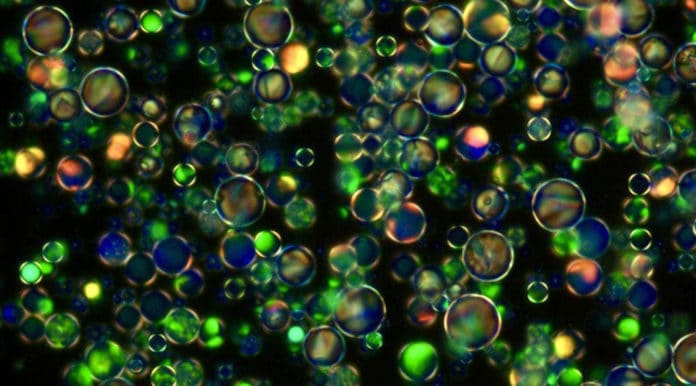More than a century after Reinitzer’s discovery, liquid crystals are an essential class of advanced materials, are used for applications ranging from displays to temperature sensors.
Next-generation display technology has been developed by scientists at the Pritzker School of Molecular Engineering at the University of Chicago and Argonne National Laboratory by creating liquid crystal within a crystal. Unlike other crystals, this crystal within the crystal reflects light at specific wavelengths.
They can be used to create better display technologies. They are also beneficial for sensing applications as they can be manipulated with temperature, voltage, or added chemicals.
Liquid crystals’ molecular orientation makes them useful for key aspects of many display technologies. They additionally can form “blue phase crystals,” in which molecules are composed in exceptionally normal patterns that reflect visible light. One of the fascinating properties of blue-phase crystals: they can flow and are pliable while exhibiting highly regular features that transmit or reflect visible light.
Due to their better optical properties and fast response, blue-phase crystals are ideal candidates for optical technologies.
Scientists developed a new technology to create a blue phase crystal interface. This involves chemically patterning surfaces on which liquid crystals are deposited and thus offers a new way to manipulate their molecular orientation. That orientation is then amplified by the liquid crystal itself, allowing a specific phase crystal to be etched inside another blue phase crystal.
Intriguingly, the newly sculpted crystal could be manipulated with both temperature and current to change from one blue phase into another type of blue period, thereby changing color.
Paper co-author Juan de Pablo, the Liew Family Professor of Molecular Engineering, said, “That means the material can change its optical characteristics very precisely. We now have a material that can respond to external stimuli and reflect light at particular wavelengths for which we didn’t have good alternatives before.”
Co-author Paul Nealey, the Brady W. Dougan Professor of Molecular Engineering, said, “This ability to manipulate the crystals at such a small scale also allows researchers to use them as templates for fabricating perfectly uniform structures at the nanoscale.”
“We are already experimenting with growing other materials and experimenting with optical devices. We’re looking forward to using this method to create even more complex systems.”
